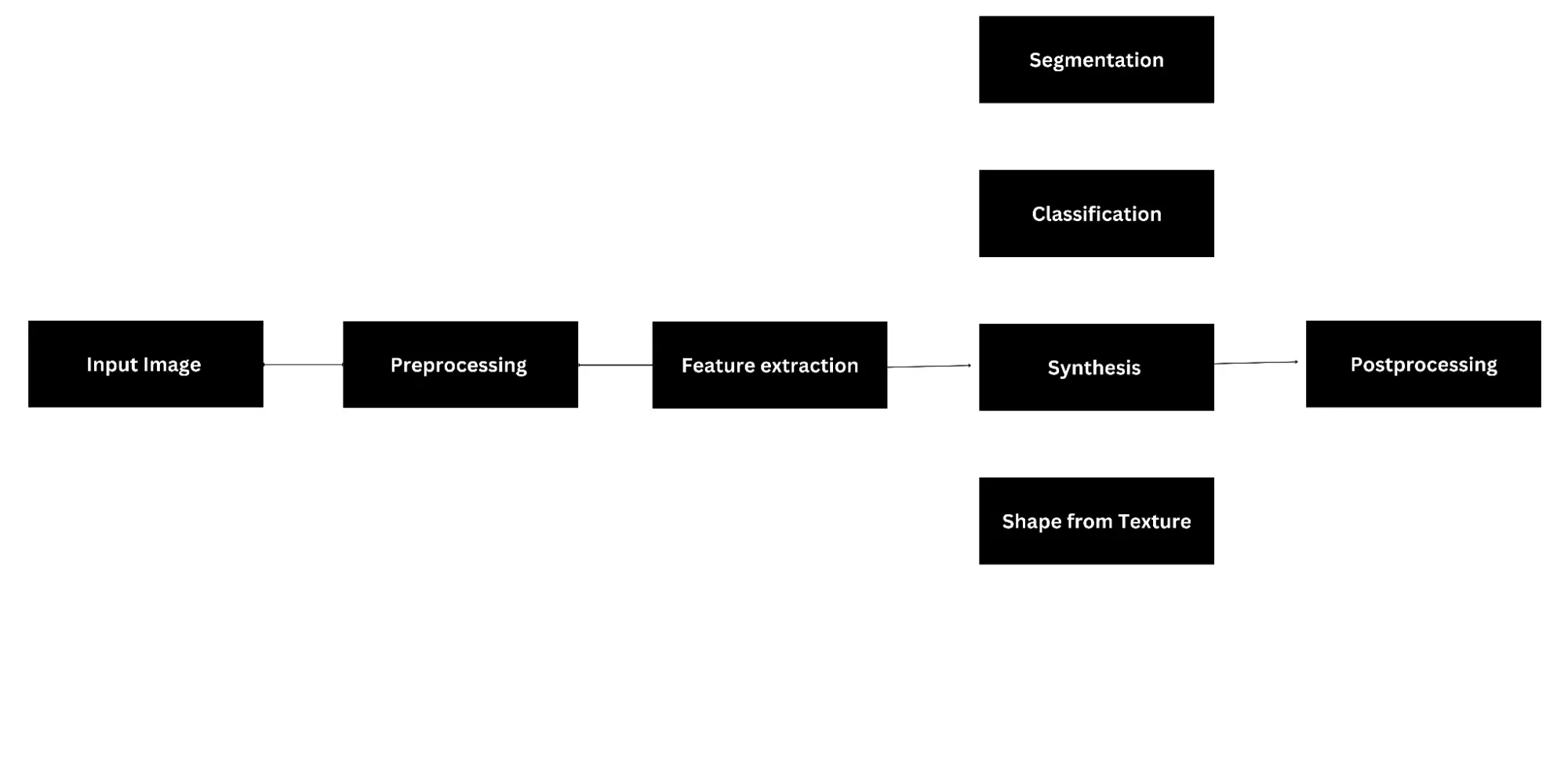“Necessity is the mother of invention” This expression has proven true throughout human evolution, as we’ve consistently found ways to improve ourselves and our environment. One of these ways is through technology, which has enhanced trade and commerce, medical science, industrialization, geographical conditions, etc.
Technology has indeed made a great impact on society. The use of computers, smart devices, and many other technology tools has caused a revolution in the way we understand and solve problems.
As time progresses, technology advances, and one example of rapidly growing technology is Computer vision. This field of technology is what we’ll be discussing in this article.
Let’s get started!
What is Computer Vision?
Computer vision is a scientific field that instructs computers and other systems on how to derive meaningful data from digital images. The technology uses algorithms and artificial intelligence to enable computers or machines to extract/obtain and understand information from images, videos, sensors, and other visual data sources.
Artificial intelligence involves the development of systems and machines to perform human-related tasks, and there are different components of artificial intelligence which include; machine learning, deep learning, natural language processing, etc
Computer vision uses artificial intelligence like machine learning and deep learning to understand data.
How Computer Vision Works
Just like the human eyes can capture visuals, and the brain interprets the visuals, computers have been developed over the years to mimic how humans see and interpret things around them.
The question is how do computers know what to see or look at?
We already know that fundamentally, the computer understands, processes, and stores data using binary.
To a computer, images are numbers represented by numerical values, and machine learning algorithms are designed to understand characteristics or patterns within a data set, in this case, the numerical values that represent images.
Images are broken into pixels assigned a number that tells the computer how to process and store the information using 0s and 1s
Color models for instance are represented by different numerical values e.g. The representation of black is RGB (0,0,0) while RGB (255,255,255) represents white.
Algorithms are designed to understand images or patterns similar to the human brain using machine learning. And just like the human brain has evolved to learn to recognize patterns and images, these algorithms can mimic how the human brain processes visual information.
In simpler terms, computer vision relies on -
Sensor technology: The use of cameras or sensors to capture a scene or an object.
Artificial Intelligence: The use of a machine learning algorithm to train the computer to interpret and understand the captured scene.
Examples of ways computer vision is used;
- Facial recognition technology
- Self-driving vehicles
- Sports performance analysis
- Medical anomaly detection
- Agricultural Monitoring
Let’s look at the use of computer vision in self-driving cars. If you follow technology trends, you’ve probably heard of self-driving or autonomous vehicles.
The ability for vehicles to drive themselves is not just something we see in movies or animations - it is real, and companies like Ford, Baidu, BMW, etc are competing to deliver the best self-driving technology.
Companies like Tesla which is an automotive and clean energy company founded by Elon Musk, Martin Eberhard, JB Straubel, Marc Tarpenning, and Ian Wright, are known for their pushing-edge technology in automobile development amongst other technological innovations and are working on releasing the first robo-taxi self-driving cars in August 2024.
Tesla already has vehicles with “Tesla Autopilot” that provide partial vehicle automation that requires the driver's attention and provides a "Base Autopilot" on all vehicles, including lane centering and traffic-aware cruise control.
Tesla’s self-driving cars are an extension of Tesla’s auto-pilot which aims to integrate more advanced features that include full self-driving capabilities that don't require the presence of a driver or human intervention.
Take note, that this technology is still on the way as it hasn’t been perfected yet. However, computer vision plays a huge role in its development, and according to predictions, self-driving cars will be available commercially in 2035.
Keynote:
- Human Vision requires eyes while Computer Vision requires sensors
- Human Vision responds to stimuli while Computer Vision understands numbers.
Benefits and Limitations of Computer Vision
Benefits
Limitations
Benefits of Computer Vision
Real-time data analysis - Accurately and efficiently analyzes real-time data to make timely and informed decisions.
Enhanced image recognition - The use of advanced image processing in computer vision allows computers to analyze and modify images with accuracy and speed, beneficial for industries like security and surveillance for facial recognition, etc.
Enhanced automation process - Enables automation of processes with greater efficiency and accuracy.
Enhanced safety and security - Enhances safety and security through real-time monitoring and detection of potential risks and dangers.
Fast processing - Processing images and videos at an accelerated rate, enabling real-time analysis.
Versatility - Applicable across numerous industries.
Limitations of Computer Vision
Requires intensive processing and computational resources - Handling voluminous images or video data requires powerful and high-performance hardware and software, which may be costly and resource-intensive.
Privacy and ethical concerns - Privacy is a concern in cases where surveillance is used to gather data that can be exploited or misused.
Ethics become a concern especially when systems may infringe on individuals’ privacy rights.
Environmental vulnerability - Environmental vulnerability can become a concern when environmental factors significantly impact the performance and accuracy of computer vision algorithms. E.g. lighting conditions, weather conditions, etc.
Data-dependent - Relies heavily on data because the quantity and quality of data is important for accuracy this means poor data or insufficient data may lead to inaccuracy.
Object recognition challenges - There may be challenges in object recognition with computer vision systems, as they may struggle to accurately identify and categorize objects. Some objects may have similar features but are different which may make it difficult for the algorithm to differentiate.
Applications of Computer Vision
In the context of autonomous vehicles, the overall concept is that a computer vision algorithm interprets visual data, including traffic signs, traffic lights, road conditions, and lane markings to make decisions about how the vehicle performs when in use.
Another instance is computer vision for drones - Artificial intelligence and computer vision are used in drone technology with machine learning algorithms which enable drones to interpret and respond to their environment.
Computer vision in drones allows for real-time detection, object mapping, and autonomous navigation amongst many other functionalities.
Here are a few cases where computer vision is needed.
Object Detection and Avoidance: Object detection and avoidance systems in autonomous vehicles and drones ensure safe navigation. Camera-based detection, for instance, uses image processing to identify objects like road signs, lane markings, and pedestrians.
Driver Drowsiness Detection: The driver drowsiness detection system monitors and alerts drivers when signs of drowsiness are detected. The system triggers alerts such as seat vibrations or warning sounds to bring the drivers back to an alert state, preventing accidents.
Vehicle Damage Assessment: Vehicle damage assessment using computer vision enables systems to determine and evaluate the damage to a vehicle after an accident. It could be identifying the cause of accidents, and the use of image processing techniques to assess the gravity of damage.
Traffic Detection/ Monitoring: Computer vision technology is used to monitor and examine traffic conditions, for instance, cameras in different locations like highways, capture live feeds of traffic which can be used for traffic management that may include preventing road blockage, and helping to improve traffic flow.
Mapping and Localization: Mapping and Localization allow systems to navigate their environments. These systems can identify different parts/elements within a map, such as a building(s) and its entire surroundings.
They determine their precise position/ location within a mapped environment which makes them necessary for applications in robotics, autonomous navigation, and other fields.
Apart from autonomous vehicles, and drones computer vision is used in several industries including;
- Manufacturing e.g. Predictive maintenance,
- Transportation e.g. Traffic management
- Agriculture e.g. Crop and livestock monitoring, species recognition
- Security/Surveillance e.g. Intrusion detection
- Finance e.g. Fraud detection
Stages of Computer Vision
The pipeline of a typical computer vision system includes;

Input Image: This is the starting point, where raw image or visual content is captured by a camera or sensor.
Image pre-processing: Involves cleaning and formatting image data, and may include - resizing the image and adjusting contrast and brightness.
Feature Extraction: This involves identifying key features within an image such as textures, edges, shape or outline, etc. to effectively interpret and analyze the content.
Segmentation: This involves separating mages into different segments based on texture, color, and so on, to make it easier to analyze.
Classification: Assigning labels and categories based on their content or features extracted.
Synthesis: Involves transforming or creating new images using the learned patterns to enhance visual content.
Shape from Texture: involves analyzing the patterns of a 2D object to infer the 3D understanding of its structure and orientation of the object.
Post-processing: This is the final stage in the pipeline where the necessary adjustments are made to the output.
Summary
Computer vision involves designing algorithms that understand the content of images/other visual data and using them in different applications. Computer vision aims to reflect human sight by acquiring, processing, and understanding images to make decisions.
Fields apart from science and technology can and have benefited from this technology as it can be used to provide solutions to improve many industries.
We’ve seen an example of the use of computer vision in agriculture - where systems can be programmed to identify different species of plants, which is just a tiny fraction compared to its capabilities
Frequently Asked Questions
Can AI generate entire websites?
Yes, AI-powered tools can generate entire websites based on user preferences and inputs, offering options for customization and optimization for factors like SEO and mobile-friendliness.
What AI tools are commonly used in website creation?
Commonly used AI tools in website creation include AI-powered site builders, content generators, SEO optimization tools, and design generators, offering small business owners and web designers options for creating functional and professional websites.
How do AI-driven personalized experiences enhance virtual shopping?
AI-driven personalized experiences in virtual shopping leverage algorithms to analyze user behaviour. This analysis enables tailored product recommendations, personalized advertisements, and a more enjoyable shopping journey, mimicking the level of personalization one might experience in a physical store.
How does the website creation process benefit from AI?
The website creation process benefits from AI by offering automation of tasks, personalized design and content suggestions, and enhanced user experience through features like chatbots and dynamic content adaptation.

Jessica Agorye is a developer based in Lagos, Nigeria. A witty creative with a love for life, she is dedicated to sharing insights and inspiring others through her writing. With over 5 years of writing experience, she believes that content is king.
View all posts by Jessica Agorye




















